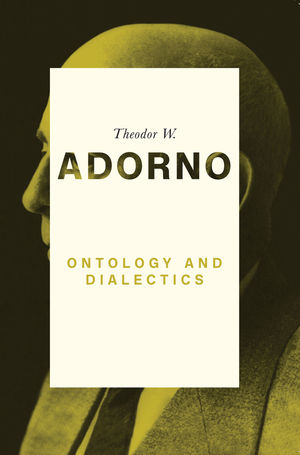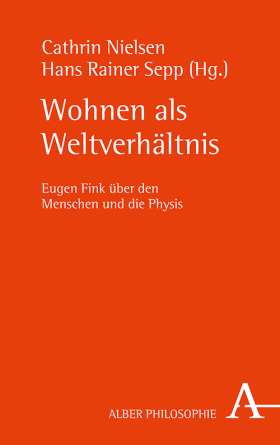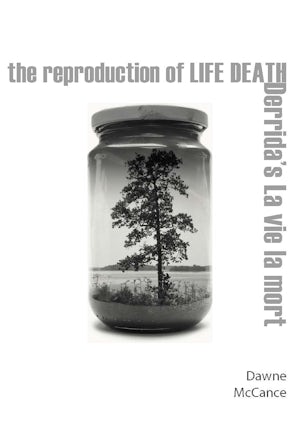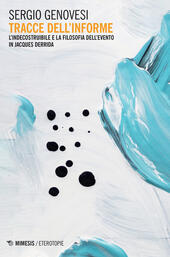 Husserl: German Perspectives
Husserl: German Perspectives
Fordham University Press
2019
Hardback $75.00
361
Reviewed by: Meghant Sudan (Boise State University)
Twelve strong essays in this excellent and impressively well-knit collection present different but convergent examinations of master-themes in Husserl’s philosophy like intentionality and the reduction/s, while also discussing specific doctrines relating to psychologism, the eidetic method, objectifying acts, time-consciousness, truth and error, monadological construction, and the intersection of phenomenology and cultural critique. The authors use a variety of approaches, historical or developmental readings and analytic commentary, comparative analysis and speculative interpretation, and, while several authors, along with the editors, are well-known to anglophone phenomenologists and Kantians, even the less familiar ones are easily recognized names in the field (the collection features four deceased philosophers, five emeritus professors, four senior figures, and one younger researcher). The essays were originally written in German, dating mostly from the 1980s-1990s with a few from the first decade of our century, and the translators Hayden Kee, Patrick Eldridge, and Robin Litscher Wilkins have conveyed their different philosophical and rhetorical styles with facility. Overall, the collection promises to present (to a non-initiate, it should be noted) Husserl’s thought through “German perspectives.”
It is worth pausing to consider what this last could mean. For it promises to show a whole force-field of thought determined by linguistic, geographical, and historical connections, and even how these determinations are themselves determined by what is left out, that is, the kind of work occurring in other, principally anglophone traditions. For instance, the collection emphasizes the dense overlap of Husserlian and Heideggerean views as opposed to cleanly separating the two, while it underplays treatments of Gadamer and Merleau-Ponty and with them certain types of questions of aesthetics, materiality, and intersubjectivity, which form a dominant thrust in the anglophone reception of phenomenology in Continental-philosophical quarters. Similar determining occlusions can be mentioned with respect to Analytic-philosophical quarters, for example, the absence of applications of phenomenology to cognitive science (and vice-versa) or the interpretation of Buddhist doctrines, or, given the unifying thread throughout the volume, which understands intentionality in highly active and teleological terms, the absence of treatments of kinaesthesia and action-in-perception views. Finally, aside from the last essay on Husserl’s thought through the Crisis, the collection passes up the chance to examine the very notion of a perspective as cultural, such as one that might be German but also European (itself universalized and universalizing) by way of recovering ancient Greek thought according to a German self-understanding prepared over the 18th and 19th centuries.
Or one could bring under “German perspectives” a number of major, agenda-setting articles unavailable in translation; or those from a devoted journal or issue or proceedings from a signal conference, whose historical significance has been recognized; or the workings of a particularly productive group or research from a particular archive; or translations of introductions to standardized editions of Husserl’s works; or simply the task of introducing some well-known figures and works to anglophone readership as R.O. Elveton’s classic little collection did several years ago, although several authors in the present volume require no introduction; or the relation of Husserl’s thought to other points taken as definitive of German philosophy (Leibniz-Wolff, German Idealism). In their short, elegant introduction, the editors state that the volume simply aims to bring before an English-language reader some previously untranslated articles by important German-language commentators, showcasing conversations they have with other important German-language philosophers. Of course, neither this deflationary description nor the curious designation “German Perspectives” in any way detracts from the high quality of the collection, and, in fact, the conversations linking the pieces in multiple ways, I find, constitute its greatest strength. I take the designation, however, as recording the need for further attempts along lines noted in the list above, some of whose elements can be glimpsed occasionally through the collection, which this review will highlight in the course of addressing each article in order.
Sonja Rinofner-Kreidl (1997)[1] revisits Hussserl’s critique of psychologism in the Prolegomena to show that it was only partially successful, which helps understand in a subtler way the major philosophical re-orientation that followed. Thus, no rectilinear path takes us from the psychologism-critique to the transcendental-philosophical stages of Husserl’s work and questions broached in earlier stages persistently re-appear later. This is because Husserl’s critique did not attend as much to the presuppositions of a psychologistic view as it did to the debilitating consequences of that view, which were taken as endorsing subjectivism and skepticism. This conflated different skeptical charges (logical, epistemological, metaphysical) and missed, quite directly, the issue of a dispute of principles, or the problem of the criterion, between psychologistic and anti-psychologistic standpoints, and, indirectly, the need to interrogate the latent issues of psychologism and Platonism in Husserl’s use of descriptive psychology and the foundations of normativity asserted in both psychologistic and anti-psychologistic models, albeit differently.
Husserl’s development of the phenomenological reduction enabled such interrogations spanning across static and genetic phenomenological inquiries. They did not arise with sole regard to developing a practical-philosophical framing against an overly theoretical one (a view tempted by the later talk of the life-world) but by reframing of the operative conception of science in order to handle the previously overlooked skeptical problems. Pure logic’s “objectivistic” model of science is replaced by a more subjectivistic model supplied by philosophy itself, as the debate shifts from being between logic and psychology to one between philosophy and psychology and the rejection of epistemological skepticism as a condition of philosophy replaces a narrower overcoming of logical skepticism for the sake of pure logic as a science of science (36-38). Rinofner-Kreidl proceeds carefully and meticulously, but perhaps due to this it is hard to find many references to German perspectives beyond the odd citation of a counter-critique from a psychologistic point of view, and one gets the impression that an obvious and influential German elephant in the room has been neglected, namely, the German Idealist shape of this transcendental-philosophical battle with skepticism at the level of principles and over the possibility of philosophy itself as a science of science. Rinofner-Kreidl’s detailed analysis thus sheds light on the dark corners of Husserl’s articulation of the problem of psychologism, but has the unfortunate effect of making the Logical Investigations appear insufficiently philosophical, philosophy itself being discovered by Husserl only afterwards.
Ludwig Landgrebe (d.1991; undated essay), by contrast, stresses the inner philosophical unity running through Husserl’s oeuvre, thus, a unity animating, even if in embryonic form, the early works as well as the psychologism-critique of the Investigations (51-59), by focusing on the concept of intentionality and underlining its achieving, striving character. Further, he provides the German context for a divided reception of this concept: on the one hand, phenomenology took up the descriptive-psychological investigations as de-linked from this inner thematic, widened a growing rift between eidetics- and ontology-centric approaches, and overall divorced from phenomenological studies a deeper ontology-critique that was always a part of Husserl’s efforts; on the other hand, phenomenology retained this deeper critical edge and fundamentally re-thought the inner thematic itself, which Heidegger did in re-situating the analysis of intentionality on the grounds of the facticity of Dasein.
According to Landgrebe, it is not simply the case that Heidegger rejects the reduction as a method (for it was always more than a way to initiate constitution-analyses of consciousness and already engaged the possibility of ontology in Husserl), nor merely that Heidegger begins his intentional analysis from being-in-the-world rather than the other way around (for the Husserlian apprehension of intentionality as active, self-producing and self-temporalizing form already broke through mundane comportments towards their inner structure). Rather, Heidegger contests the model of subjectivity assumed in these conceptions of intentionality and reduction, which comprises reflection and an “attitude of impartial observing” (75) achieved by bracketing one’s determinate Dasein in order to universalize the partial acts of reflection. This, however, conceives oneself as only an indifferent other and fails to apprehend the self-knowing of Dasein in its performance of existence, which takes us to the limits of intentional analysis, since the synthetic constitution of an object can no longer be found here. How an a priori is to be still articulated here, how a metaphysic of facticity is possible – these questions remained on Husserl’s mind in the last years and remain open for future phenomenology, for Landgrebe.
Jan Patočka (1982) too takes intentionality in its active, dynamic form to be a guiding principle for phenomenology at large and uses it to examine the Husserl-Heidegger relation, although not to see in it a parting of ways but an interweaving of interests and a critical continuity of the phenomenological project. At the heart of such a reconciliation is Patočka’s reading of the reduction as marked by a fundamental circumscription (the suspension of the epoché distinguished from an alleged march to reduce all being to the absolute sphere of consciousness), which both bridges the rift Landgrebe outlined between eidetic and ontological strains of phenomenological research and qualifies Heidegger’s seeming rejection of the reduction. Patočka bases his reading on Husserl’s 1907 lectures on The Idea of Phenomenology to find that the reduction maintains a positivity of being and envisions research into phenomena as resisting a total absorption into immanence by inexhaustible progress through experience, balancing eidetic reflection against the constructions of positivity in science or modernity itself.
Although Husserl couched the reduction in a subjectivist vocabulary stemming from Kant and Fichte,[2] the tension present in it between reifying and non-objectifying aspects, and of questions of being and nothing, allows us to discern Heideggerean motives that are otherwise expressed in the language of moods and errances of being. Thus, “the possibility of an epoché and its limbo is inherent in the experience of annihilation… [I]t is not the epoché that establishes the limbo upon which the phenomenological reduction is built up, but rather the epoché presupposes the experience of the limbo….” (99-100). While Heidegger’s critique takes this nihilating moment to the greatest distances from Husserl in using it to launch a metaphysical critique of the presupposition of acts of negation in formal logic, Patočka believes it possible (and believes Heidegger believed a reconciliation was possible) to see both thinkers grounding their overall visions for philosophy upon a reflection on crisis as such, which remains the task of future shapes of phenomenology.
Dieter Lohmar’s (2005) defense of eidetic intuition and variation as a self-standing phenomenological method continues within the outline of the German reception of Husserl’s thought as given by Landgrebe and continues with Patočka to question the reduction’s claims to be a univocal, unitary phenomenological method. Lohmar argues that eidetic intuition should be seen as a variety of categorial intuition insofar as both preserve a basic orientation to the possibility of knowing an object through a pathway of syntheses of coincidence. This clarifies how eidetic variation is the key element of a method centered on eidetic intuition, which overcomes nagging questions in that method about non-givenness in intuition for certain classes of objects (image consciousness, universal objects) by asserting the functional primacy of free variation in phantasy over perception. One might hold that free variation needs the reduction to get off the ground, but Lohmar explains that both eidetic variation and the phenomenological reduction suspend the factual to reveal universals, but their purposes are different, as reduction targets validity justifications but variation lets us uncover structures of clarity answering to initially vague concepts, thus undertaking the philosophical clarification of knowledge itself.
This is a clear account of the method, and Lohmar does address worries about its limits (how far must we go? when do we stop? do we presuppose a concept in clarifying a concept? is cultural parochialism inherent in the limits of the operation and the concept clarified?), but Lohmar hastily brushes aside other questions in its wake or gestures towards the genetic theory of types for further development of the method, undermining its claims to theoretical independence. If the process sounds like an empiricist account of the generation of concepts or even what Kant calls their logical origin in acts of comparison and abstraction, we are told that Husserl is not indulging in a genetic psychology of concepts, but is in pursuit of universal objects, and in any case, Kant too buried many secrets about the imagination’s powers in the depths of the human soul; if the Platonism charge is recalled at this point, we are told that Husserl really treats Platonism as little more than mysticism and does not assert a separate realm of irreal being; if we ask after the apriority these objects may still claim, even without reminders about their location in the realm of absolute being of consciousness, we are told that Husserlian apriority is not severed from experience like Kant’s but more like Humean induction; if we ask about the Humean legacy, we are referred to Husserl’s un-Humean, mitigated Platonism; etc. What one misses is an actual confrontation with these issues, which are either invoked by Lohmar himself (not only when he brings up Kant as a foil, but also when he describes seeing the a priori in the very ways that trouble Kant’s problematic theory of constructing concepts [137-138n.57]) or which are present in Husserl and call for greater scrutiny (the relation of the doctrines of eidetic intuition and variation in the 6th Investigation to the critique of Modern nominalism and of Humean doctrines like ‘circles of resemblance’ in the 2nd Investigation). Overall, however, that eidetic investigation seems to have kept the Husserl-Archiv in Köln busy relatively recently (133n.1) indicates that this German perspective of inquiry is alive and well, Landgrebe’s diagnoses notwithstanding.
Karl Schuhmann (1991) presents an historical German perspective as he takes us back to Husserl’s manuscripts prior to the Logical Investigations and complicates the story of origins, somewhat as Rinofner-Kreidl did, by arguing that the discovery of intentionality did not occur entirely within the scope of Brentano’s doctrine, as the 5th Investigation may lead us to believe, but emerged from efforts to resolve Twardowski’s proposals in its vicinity. This also yields the corollary that Husserl’s progress towards a theory of noema does not follow directly from the initial conception of intentionality. The problem posed by Twardowski asks about the way representations can both relate to an object (for a representation represents something) and yet not relate to an object (when nothing in actuality answers to it).[3] Twardowski’s solution proposed two kinds of objects to reconcile the universal relation to objects as well (as psychic contents) cases of actual objects. Husserl rejected this solution for its psychological implausibility (unlimited variety and complexity of psychic contents) and epistemological redundancy (the object known is always one and the object of a contradiction does not exist in any guise).
This, however, moved him into treating all propositions as falling under a guiding assumption for the relevant discourse, which modifies not objectivity but the position of the subject and its representations. Husserl’s solution thus turns to the subject, its doxic investments and the discursive form of knowledge, which suggest the new concept of intentionality; but he is still far from clarifying the systematic place of the subject in which these acts and contents take place, the consistency and priorities among different discursive forms of objectivity, and the coherence of judgment forms with perceptual knowing. But the future concept that dealt with the latter issues cannot be said to simply arise from the early concept, because the question of being was not posed in any critical way at all earlier and because the later concept of noema recalls elements of Twardowski’s interpretation, which had supposedly been overcome. Schuhmann leaves us with tantalizingly brief indications (which may be the case when working from fragmentary manuscripts, although Brentano’s and Twardowski’s theses could have been developed more broadly to give a fuller sense of the territory within which Husserl worked), without paving with further clues from developmental history the actual path from here to the theories of intentionality in the Logical Investigations and Ideas I.
Verena Mayer and Christopher Erhard (2008) take up the concept of intentionality as developed in the 5th Logical Investigation, and, although this essay is a solid and detailed exposition of the main sections of this Investigation (thus filling an oppressive gap in the literature while also conversing with the few who do attend to this topic), it also helps understand more broadly some key areas of concern for the early Husserl signaled by Schuhmann, such as the question of fitting judgment with perception, details from the general background and the internal critique of Brentano that contextualized Husserl’s own forays, the holism about mental contents that enables an analysis at the level of acts rather than isolated attention to representations or images or names or judgments, etc.
Importantly, Mayer walks us through the 5th Investigation as it integrates different mental components into the concept of an act with its intentional essence, which is crucial for understanding the active nature of intentionality as a horizonally shaped process of a cognitive fulfillment. Erhard provides a detailed reconstruction of the concept of objectifying acts, which is important to understand how the intentionality of an experience is variously articulated and modified, sometimes at the level of content, sometimes at the level of quality, in regard either to imaginative variation or to identifying syntheses in actual cognition. Owing to the expository nature of this commentary, one sometimes feels the need for critical argumentation over merely presenting Husserl’s view, which is admittedly hard to discern in these thickets. The authors are aware that the 5th Investigation is tortuous terrain, but precisely its complexity offers a rich field of interaction with Analytic Philosophy and their own effort to craft a workable platform across this terrain is already a necessary step towards such dialogue.
Ulrich Melle (1990) deepens the investigation into objectifying acts by clarifying it against non-objectifying acts, which Mayer and Erhard had noted as a topic developed more fully by Husserl only after the Logical Investigations, and by drawing out the larger context of these acts, which tug at the models of perception and judgment in different ways and inform Husserl’s “pluralistic theory of reason…[as] logical-cognitive, axiological, and practical.” (193) Melle relies on manuscripts of Husserl’s ethics lectures (1908/9, 1911, 1914, 1920) to bring out Husserl’s vexations over adjusting objectifying and non-objectifying acts at different levels, trying at times to understand the latter acts of valuing, feeling, desiring, and willing in terms of the former acts of perception and intellection, recognizing at others a self-sufficiency of non-objectifying acts in terms of objective content or existence-positing modifications.
Even if these attempts are not settled conclusively, Melle persuasively shows both the blurring of the distinction between the two types of acts and the concomitant unification of theory of reason as obtaining over different types of objectivities. This lucid essay is too short, however, to learn more about the way the theory of reason develops along the traditional axes of the true, the beautiful, and the good, while responding to the new objectivities on offer through non-objectifying acts, or about ways to strengthen suggestions that these reflections on value-theory bend Husserl’s overall project or put pressures on particular tendencies in it, such as the content-apprehension scheme. One is left wanting especially in regard to other German perspectives on these questions, whether other phenomenological work on ethics like Scheler’s, or, what is better known in the anglophone world, Heidegger’s attention to the question of being and to art and Gadamer’s investigations of aesthetics.
Klaus Held (1981, with references updated to include recent publications) provides a dense meditation on the phenomenology of time to explicate the Husserlian notion and to outline possibilities beyond it by overcoming its residual Cartesianism. The latter is indicated in the very terminology of time-consciousness that lures the underlying idea into the trap of subjectivism, from which Held seeks to liberate that idea to see time as that which “measures the phenomenal field in its fluctuation” (210; the Aristotelian-Heideggerean punning intended by Held). Like others in this volume, Held views intentionality as a fundamentally dynamical condition and one vividly sees the interaction with other German perspectives here as he thinks collaboratively with other authors in this volume like Landgrebe and Patočka. But he stresses, with distinctively dialectical imagery (placing yet other German perspectives in view), the primacy of various tensions and oscillations, flow and passivity, withdrawals and emergences, which constitute the field of appearance stretching between or before subject and object.
This field of appearance in its essential fluidity should explain subjectivity, rather than the other way around, and instead of getting by with surrogates like “pre-objective” or “primal impression,” one must genuinely get hold of the ways in which unity of presentation is determined by the pulsating functions of the field itself. Further, Held seeks to explain how the latter becomes fixed in form-content distinctions that, as revealed by his dissection of it, cloud Husserl’s account of time-consciousness. Thus, by undoing presuppositions and untying knots in apprehending features of the phenomenal field such as its past and futural directionality, the subjective phenomena of remembering and forgetting, Held intends for his own proposal to remain phenomenological just when it is in danger of becoming an external dialectical construction. Where this danger seems to be greatest is in Held’s attempt to reconcile the appropriatedly revised Husserlian theory with Heidegger’s discussion of moods and the disclosedness of the basic rhythm of life between poles of natality and mortality, which lends the “living present” its material vitality and actional character. The undeniable appeal of the resulting view, however, encourages the interpretive risks.
Rudolf Bernet (2012) continues the attempt to think Husserl along with Heidegger by seeing the latter’s concepts of truth and untruth as grounded in Husserlian viewpoints, which also helps see a continuity between early and late Heidegger himself. Untruth, for Husserl, is thought in terms of empty intending, which is shown to be consistent with accounts of idle chatter in Heidegger, and the way that idle chatter still bears a relation to truth, as do all human comportments, allows consistency with the essential cognitive drive of intentionality for Husserl. Husserl’s conception of falsehood as a disappointment or conflict lies in a stronger dimension of truth than a merely unfulfilled intention. This too agrees with Heidegger’s conception in Being and Time of Dasein’s covering-over comportment, which still manifests a self-showing in cases of semblant appearing.
In one respect, Heidegger’s later conception through alethic disclosing draws closer to Husserl’s conception as he now “think[s] disclosedness and hiddenness through one another” (148) essentially and not only in terms of Dasein’s modes of fallenness. But the increasing role of mystery in the later Heidegger escapes Husserlian synthetic projections entirely, and Bernet tries to show with reference to the Parmenides lectures that this leads to internal problems of its own, as Heidegger tries to derive the concept of mere falsehood and the concept of untruth proper or mystery as both types of a fundamental hiddenness. Bernet’s exploration of the latter point could have been bolstered by an examination of Heidegger’s own critique of logic, which was touched on in Held’s essay. But that would be a different essay, while the present one provides a very economical discussion of the central concepts at play and includes a very helpful list of references to all relevant texts on the doctrine of truth in Heidegger, and also broadens its own German perspectives to works written in French.
Karl Mertens (2000) examines the arguably directly German perspective invoked by Husserl himself in his invocations of Leibnizian monadology to articulate problems of intersubjectivity. Since this dialogue, Mertens finds, is ultimately nugatory, it serves to caution against merging traditional metaphysics with Husserlian phenomenology. Yet, it may also be seen as spurring reformulations of phenomenology itself: in this regard Mertens’s essay is well positioned as leading into the last two essays considering Husserl’s thought in the Crisis, and, even if his essay is too short to dig deeper, Mertens rightly recognizes this juncture as a broadening of German perspectives by those opened up by Merleau-Ponty. The endnotes include particularly useful pointers for further (German-language) discussions of various issues, both classic and contemporary.
Husserl turns to Leibniz as to a compatriot seeking to replace the bare Cartesian ego with an appropriately complex account of the concrete structures of subjectivity in the concept of the monad. Leibniz was responding to classical problems about the individuality of substance and so his solutions simply do not work for a phenomenology operating on a very different plane. Indeed, it is a mystery why Husserl looks to Leibniz at all, for the windowless monad allows no genuine intersubjectivity and the perspectivalist approach they seem to share goes no further than superficial similarity. Unfortunately, Mertens does not help understand this mystery, nor the compounding mystery that Husserl foists atop this failed conversation his own problematic account of intersubjectivity, which Mertens, and not him alone, deems irredeemably solipsistic. This creates suggestions for renewed efforts, however, and perhaps Husserl was ultimately driven by the Leibnizian encounter to yet greater interest in the constitution of horizons, as much as he was perhaps held back by his allegiance to notions of consciousness and predicative experience at just the point that phenomenology could have turned to questions of pre-predicative embodiment to articulate the truly social self in a truly worldly perspective.
Elisabeth Ströker (1988) reminds us that Husserl’s interest was directed towards the validity and meaning of science across his oeuvre and the theory of intentionality was prepared for the sake of connecting mind and world in a way that ultimately restores that lost validity and meaning. The meaning of science is related to forms and contexts of practice and the transcendental theory of intentionality is related to the particular cultural-historical actuality of reason. While talk of crisis was very much in the air when Husserl wrote his Crisis, his view is distinctive in taking philosophy as a critique of itself that is a critique of science that is a critique of culture. This rests on a vision of unity of philosophy, science, and humanity, and of history as a long decay of a telic golden past, a “binding inheritance of Greek philosophy” (298). Ströker strives to show how various technical concepts like life-world, constitution-analysis, subjectivity, etc. figure into this easy wisdom, and perhaps all this is forgivable given that this essay was in fact at first a public memorial address rather than a scholarly publication, but, also, perhaps unwittingly, it is a testimony to the kind of tritely tragic and grand-historical self-narrative that too can count itself as a German perspective.
Ernst Wolfgang Orth (1987) complements Ströker’s essay both by turning to the issue of culture primarily (over science) and by lending gravity to the issues at play therein, such as problems about universalizing particular forms of practice or concepts such as “humanity,” which stretches across space and time (Greeks and us) all too easily in Ströker’s essay. Instead, he makes a compelling case for seeing cultural anthropology as uneasily integrated with transcendental phenomenology, which became evident to Husserl himself over the period from the Ideas to the Crisis. The human being is neither that from which the transcendental ego is abstracted nor is the latter a real part of the former, but the human being is constituted from transcendental subjectivity and Husserl increasingly locates in this connection the coevality of a universal human science and a first philosophy.
The resulting approach differs sharply, to Orth’s mind, from a narrowly natural scientific orientation, and progressively complicates phenomenology’s inner premises (many reductions, not a single overarching one; the dialectic of emergence and withdrawal at the heart of intentionality as Held argued). This, in turn, proceeds towards a conception of the cultural sphere, which is neither a mere occasion for transcendental reflection, nor subsumed under transcendental constitution, but, rather, under the title “lifeworld,” names the broader viewpoint in which culture with its own irreducible thickness (which includes naturalized forms within itself) is integrated with phenomenological reflection on humanity, which is a variegated presupposition and a limit idea that constantly shapes the phenomenological project. This is a wide-ranging and powerful proposal that simultaneously sheds light on many methodological questions about the Crisis as well as interfaces with other German perspectives, in this volume but also beyond. But one wonders if, at the end, it is not just the problem of horizons that has been re-discovered under the name of culture, and, moreover, one remains as curious as before if any advance is made on questions of cultural difference, parochialism, and universalism, that is “culture” in the usual senses of the contingent and disparate determinations of human life.
[1] This is the date of the original German version of the essay. I will provide this information for each essay.
[2] Resonances with Fichtean exertions over the identity of the transcendental and the empirical subject, the assumed possibility of a science of science, the grounding of questions of method in questions of freedom, are present in several essays implicitly (we can already look back at Rinofner-Kreidl’s and Landgrebe’s essays in the light of these exertions) or explicitly in Patočka’s essay (97; and Hegel’s pistol-shot reference to Schelling is quoted on p. 99) or later in Held’s essay (236). A mention of Fichte (or, for that matter, Hegel) is missing, however, in the helpful Index provided in the book, and perhaps this only indicates the need for including German Idealist background in a consideration of German Perspectives. Another wholly missing index entry is Gadamer, while Merleau-Ponty receives two indexical references to the same page, missing brief appearances on two other pages.
[3] Brentano’s concept of intentionality asserted a universal relation to an object, while Bolzano upheld objectless representations, so Schuhmann names this “the Brentano-Bolzano” problem. Brentano’s auxiliary theses about converting any existential proposition into a judgment form and distinguishing determining predicates (which enrich a subject, e.g. “educated person”) and modifying predicates (which change the subject itself, e.g. “dead person”) were used by Twardowski to solve the problem.







